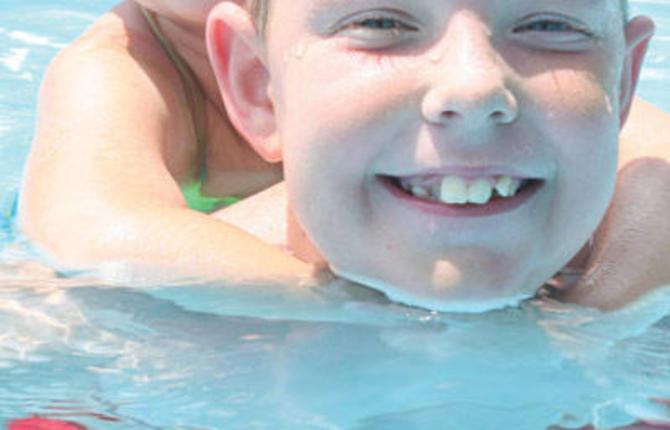
Teach children pool safety
Whether you are taking a family vacation to the beach, boating on your local lake, or swimming in the community pool, swimming and water safety should always be a priority. Follow these tips for safe swimming:
1. Don’t Swim Alone: Do not allow children to swim without an adult. Even adults should never swim alone. It is best to swim with others. In a pool, swim at a depth that is safe for you. If you're just learning to swim, stay in the shallow end. Keep in mind that swimming at night increases all risks.
2. Follow Regulations: If you are at a public pool or beach, follow all regulations and lifeguard directions. Depth markers are important. You should never dive into shallow water. Additionally, if there is not a lifeguard on duty, you should take extra safety precautions.
3. Learn to Swim: If you have a pool, or your family takes part in water activities, it is very important that you know how to swim. Learning basic swimming and floating techniques can save lives. Check with your local YMCA or community pool for information on swimming lessons from a certified swimming instructor.
4. Safety Equipment: It is important to keep rescue equipment by the pool or on your boat. Life preservers and life jackets should be easy to access in case of an emergency. At home, keep a telephone and emergency numbers poolside. Additionally, parents should know CPR. Statistics show that when CPR is performed, it improves the outcome for drowning victims.
5. Fencing: If you have a pool at home, make sure the pool is completely surrounded by fencing. Fencing should be at least four feet high and separate the house, yard or play area from the pool. Fencing latches and locks should be high enough to be out of the reach of children. Remove all toys from the pool and surrounding areas immediately after use. The presence of toys may encourage children to enter the pool area unsupervised.
6. Flotation Vests: When boating, you should wear a Coast Guard-approved flotation vest, regardless of your swimming abilities. Even while wading in the ocean or at the lake, it is recommended to wear a personal flotation device. This is especially important for inexperienced swimmers and children. Remember, water wings, noodles, inner tubes and rafts should never take the place of an approved flotation device.
7. Designated Areas: Swim only at designated beaches or in swimming areas marked with buoys that keep boaters, water skiers and jet skiers away. If you cross these buoys, you run the risk of not being seen by boaters, and you could potentially be injured. Additionally, rip currents, tides and water depths may be different the farther out you swim. Remember, designated swimming areas are the safest place to swim.
8. Don’t Drink and Swim: At times, your swimming activities may also include a family barbecue or picnic. However, it is important to remember that alcohol and water sports don’t mix. Your chances of drowning or becoming injured increase greatly when under the influence of alcohol. Additionally, many beaches do not allow alcoholic beverages.
9. Surf Conditions: Ask a lifeguard about surf conditions before swimming in the ocean. Rip tides are dangerous and can catch even the best swimmers off guard. If you are caught in a rip current, swim parallel to the shore. Once you are free of the current, swim toward the shore. Rip currents can be recognized as water that is discolored, choppy, foamy or filled with debris and moving in a channel away from the shore. Report any hazardous conditions to the lifeguard on duty.
10. Warning Flags: Beaches post warning flags to alert swimmers of the day’s conditions. Be sure to check these flags before entering the water.
a. Double Red: The beach is closed.
b. Red: No swimming allowed – Dangerous conditions. Usually this flag is up when there are extremely dangerous rip currents.
c. Yellow: Swim with caution. Be cautious of strong long shore currents or other swimming hazards.
d. Green: Safe swimming conditions. Swim with usual care.
Did you know?
* Swimming is the third most popular recreational activity.
* About 92 per cent of children who survive a drowning are discovered within two minutes following submersion, and 86 per cent children who die are found after 10 minutes.
* Children from non-swimming households are eight times more likely to be at-risk of drowning.
Visit www.homesafetycouncil.org.





